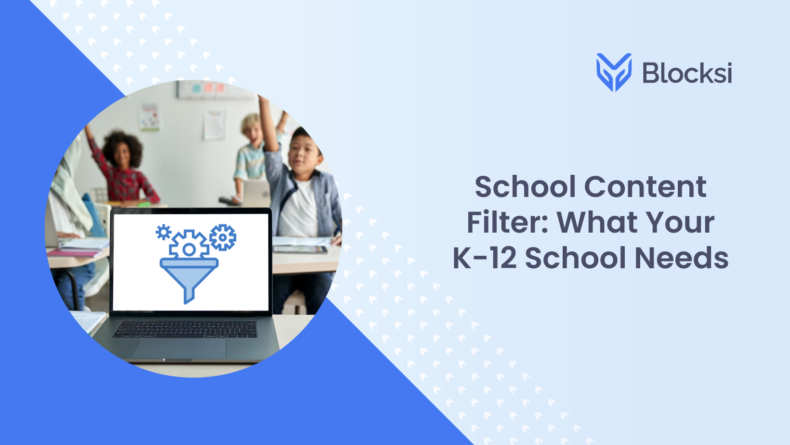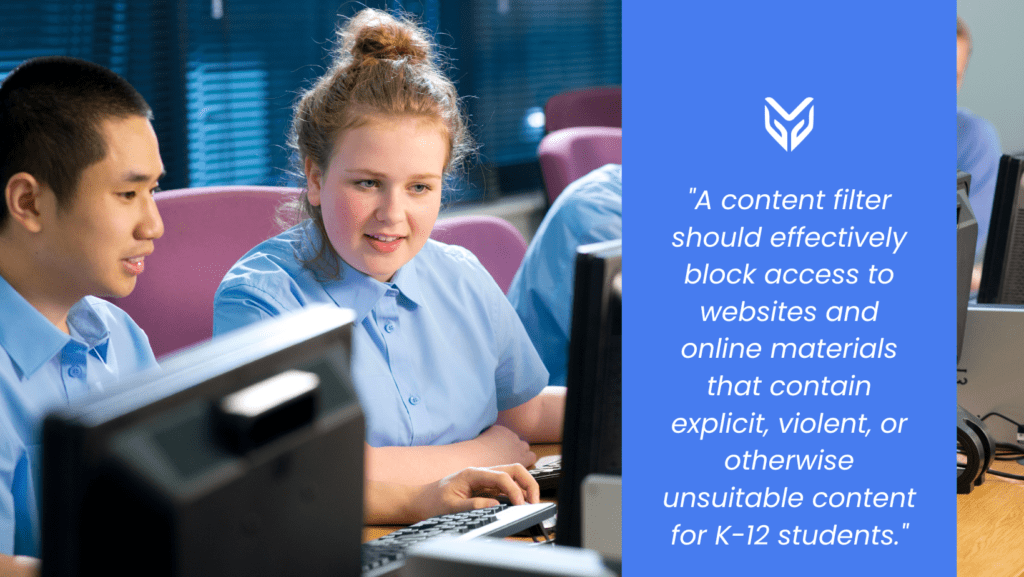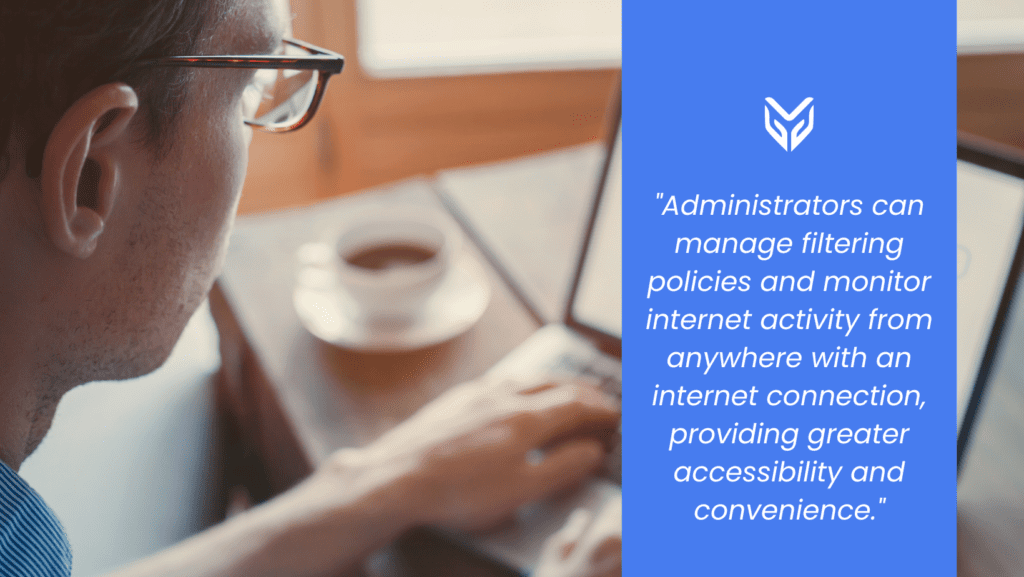NEWS
School Content Filter: What Your K-12 School Needs

In today’s digitally connected world, K-12 schools are facing increasing challenges in ensuring a safe and productive online environment for students. An efficient school content filter is a critical tool that helps balance providing safe and guided access to educational resources and protecting students from harmful or distracting content. In this article, we will explore the key aspects of content filtering for schools and look into the importance of avoiding overly restrictive measures and the benefits of cloud-based web filtering solutions.
The Role of a School Content Filter
A school content filter is a technology that allows schools to manage and control the content accessible to students and staff within their network. Its primary purpose is to ensure students can access educational resources while preventing exposure to inappropriate or harmful content. Here are some essential functions a robust school content filter should fulfill:
1. Blocking Inappropriate Content: A content filter should effectively block access to websites and online materials that contain explicit, violent, or otherwise unsuitable content for K-12 students.

2. Monitoring and Reporting: It should provide the ability to monitor internet activity and generate reports to identify and track any suspicious or inappropriate behavior, aiding in maintaining a safe online environment.
3. Customization: The filter should be customizable to accommodate the specific needs and age-appropriateness of different K-12 grade levels, allowing for more flexible and tailored filtering policies.
4. Access Control: Administrators should be able to grant or restrict access to certain websites or online resources based on educational relevance.
Striking a Balance: Avoiding a School Web Filter That’s Too Restrictive
While it’s crucial to protect students from harmful content, an overly restrictive school web filter can hinder the learning experience. Here are the potential downsides of a filter that is too strict:
1. Limiting Educational Resources: Overly restrictive filters may inadvertently block access to valuable educational websites, videos, or research materials, impeding students’ ability to learn and explore.
2. Frustrating Teachers: Teachers may find integrating digital resources into their lessons challenging when they constantly encounter website blocks, leading to frustration and wasted instructional time.

3. Hindering Digital Literacy: Students benefit from developing digital literacy skills, which include learning how to evaluate online information. An excessively restrictive filter can limit their exposure to this important aspect of education.
4. False Positives: Filters that are too strict can sometimes generate false positives, blocking innocuous websites that contain no harmful content.
To avoid these pitfalls, it’s essential to strike the right balance when implementing a school content filter. This involves implementing a highly customizable and granular content filter and regularly reviewing and fine-tuning filtering policies to ensure that they align with educational goals and values. Collaboration between IT administrators, teachers, and other stakeholders is vital in achieving this equilibrium. That is why picking the right content filter to start with is crucial. Read on to find out how to pick the right content filtering for your students and staff.
Cloud-Based Web Filtering: A Modern Solution
One of the most effective ways to implement a school content filter is through a cloud-based web filtering solution. Unlike traditional on-premises filters, cloud-based solutions offer several advantages:
1. Scalability: Cloud-based filters can easily scale to accommodate the growing number of devices and users in a K-12 school environment. This flexibility ensures that the filtering solution remains effective as the institution expands.
2. Accessibility: Administrators can manage filtering policies and monitor internet activity from anywhere with an internet connection, providing greater accessibility and convenience.

3. Real-Time Updates: Cloud-based filters receive real-time updates to their databases of blocked and allowed websites, ensuring that the filtering is up-to-date and effective against emerging threats.
4. Cost Efficiency: Cloud-based solutions often require lower upfront costs and reduced maintenance compared to traditional on-premises hardware, making them a cost-effective choice for schools.
5. Integration: Many cloud-based web filtering solutions, like Blocksi, can seamlessly integrate with other educational technology tools and systems, enhancing the overall digital learning experience for both teachers and students.
In conclusion, a school content filter is an essential tool for maintaining a safe and productive online environment in K-12 institutions. Striking the right balance between security and accessibility is key to ensuring that students can harness the full potential of digital learning resources. Consider implementing or switching to a modern, cloud-based web filtering solution to streamline the process and provide a secure online space for both students and educators.
When you restrict websites in school and reap other benefits of effective content filtering, you can achieve safe technology usage and make the internet a valuable educational tool for all – upgrading the 21st-century modern classroom.
SOURCES
[1] What are the dangers of using the internet for kids?
[2] 5 challenges with technology in the classroom and how to overcome them





